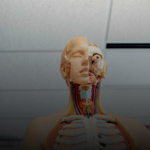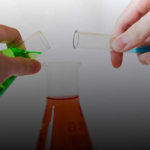Section 1
Preview this deck
Sartorious
Front
Active users
0
All-time users
0
Favorites
0
Last updated
4 years ago
Date created
Mar 1, 2020
Cards (95)
Section 1
(50 cards)
Sartorious
Strap like; longest muscle in body, flexes, abducts and rotates thigh
Hypothalamus
Visceral control center, emotion, temp reg, Hunger, sleep, hormone production
Cell body
Protected within the Cns, biosynthetic activities ; Info brought here
Whole blood transfusion
Used when blood loss is substantial
Epithalamus
Sleepiness, biological clock, emotional response to smell
Gray matter
the darker tissue of the brain and spinal cord, consisting mainly of nerve cell bodies and branching dendrites.
Packed red cells
(Plasma removed) are used to restore O2 - carrying capacity
Thalamus
Memory processing, sensation, motor processes, learning (diencephalon)
Hypothalamus pituitary complex
Hormone control
Red blood cells
45%, erythrocytes, blood clotting for wounds
Levator
Produces superior movement
Hemostasis
Fast series of reactions for stoppage of bleeding (Vasc spasm, platelet plug formation, coagulation)
Plasma
Liquid component of blood (55%)
Nervous system functions
1- sensory input, 2- integration, 3- motor output (communications)
Know pathway of sound waves
Tympanic membrane, auditory ossicles, move threw fluid in scala vestibule, travel through helicotrema, and then through cochlear duct
endocrine
No ducts, produce and release hormones, internal secretions
Axons
Impulses away from cell body, processes called nerve fibers
Middle ear
Tympanic cavity; hearing
Medulla oblongata
(Brain stem) relays motor and sensory impulses, regulates heart beat, breathing, swallowing (above spinal cord)
Chambers of the heart (4)
Left and right ventricle, left and right atrium
Internal ear
Inner: hearing and equilibrium
Synapses
Junction that mediates info transfer from one neuron to next or from neuron to effector cell (impulses that pass by)-neural cell communicates with target cell
Transverse abdominous
Deepest muscle of abdominal wall, compress ab contents
Sensations
Sweet, sour, bitter, salt, Unami
Orbicularis Oris
Multilayer muscle of lips; close lips, kissing and whistling muscle
Serum vs Plasma
Serum(fluid) is plasma(liquid) but doesn't have clotting proteins
Cerebellum
Coordination, posture, balance (behind spinal cord)
Pons
(Brain stem) relays info from one side of brain to other, breathing (above medulla)
Exocrine
Ducts that carry secretions, don't release hormones, external secretions
White blood cells
Leukocytes; fight off infection, 1%
Corpus Callosum
Largely commissure (thickened body), deep within longitudinal fissure; broad band of nerve fibers that join two hemispheres of brain
White matter
the paler tissue of the brain and spinal cord, consisting mainly of nerve fibers with their myelin sheaths.
Dendrites
Main receptive or input regions ; short extension from cell, transmitted to cell body
Action potential
Brief change in membrane potential in "patch" of membrane that's depolarizers by local currents (principal way neurons send long distance signals)
Olfactory receptors
Sight of olfactory epithelium in nasal cavity; detect odor
CSF (cerebral spinal fluid)
Protect the spinal cord and is a clear fluid; in subarachnoid space
Na- K concentrations
K is higher inside cell, and na is higher outside
Pericardium
Double sac walk around heart and protects and anchors heart
Meninges
Layers on membrane coverings of brain that protect it
Latissimus dorsi
Broad, flat and triangular muscle of lower back ; rotates arm at shoulder
Spinal cord regions
8 cervical , 12 thoracic, 5 lumbar, 5 sacral, 1 coccygeal
External ear
Outer; hearing
Midbrain
(Brain stem Processes visual info; eye movement, reflexes (above pons)
Taste buds
Receptor organs; found on tongue and on tops of papillae fungi form
Blood types
A, B, AB, and O
Cerebrum
Interprets sensory info, controls voluntary muscles, intellectual and emotional processing, memory (top of brain)
Hormone
Chemical substances, secreted by cells into the extra cellular fluids that regulate Metab fx of other cells and organs
Auricles
Attached to left and right atrium; increase capacity of atrium and increase vol of blood
Formed elements
Cellular portion of blood (leukocytes and erythrocytes)
Gracilis
Slender
Section 2
(45 cards)




